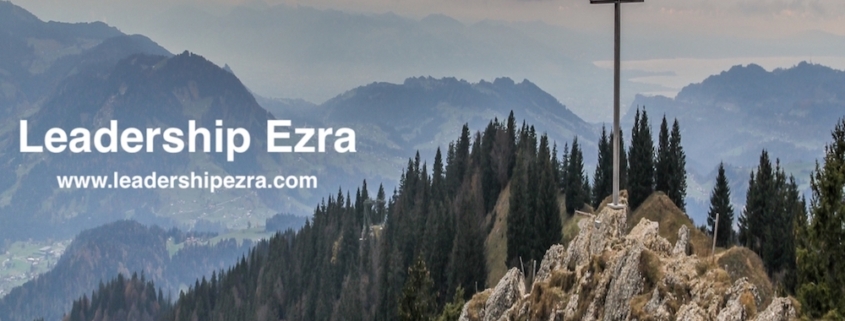Podcast Episode 32 (part 5): Zoom In and See the Trees
This week’s episode builds on Monday’s article, part five in the series titled “Complementary Contradictions.” Here is the transcript of the podcast.
Sometimes, you get conflicting words of advice, one which is good and the other which is not, and it requires discernment to determine which is the right advice to follow. But often, these seeming contradictions are, in reality, complementary and, when used appropriately and in the right way, can work together to help you make better decisions. In this series of articles and podcast episodes, we are looking at different leadership ideas or principles that seem to contradict, are opposite, or at least differ from each other and pairing them up to see how they actually complement each other to make you a better leader. Last time, in part 4, we explored the idea that you need to be able to zoom out and see the forest, and this time, in part 5, the idea that you need to be able to zoom in and see the trees.
Last time, in the complementary episode to today’s discussion, we talked about taking the time to see and understand the big picture. We said that, in successful leadership, you need to be able to get above the clouds and see the whole picture before you can drop back down to ground level and begin the process of directing, guiding, leading, and moving. If you don’t do that first, you won’t know where you are, you won’t know where you’re going, and you will end up someplace else. The point was that you can’t see the forest and the trees at the same time, so start by first zooming out to see the whole picture. But then, you need to zoom in, which is our topic for today.
As I started as the head of school at a new school, I set about getting an understanding of where I was. That began by learning the history and context and gathering information to first have the big picture of the place I had stepped into. In other words, I started by zooming out, which is what we talked about last week. I did that by spending my summer before the start of the school year meeting with people – faculty and staff, parents, alumni, students, and board members. I asked everyone I met with to tell me about the school and their experience with it. I also asked specific questions about topics that would come up in the conversation. By the end of the summer, I felt like I had a pretty good map of where I was. I had developed a picture of the school, its history and culture, its strengths and weaknesses, and the sore spots. Then I began to zoom in.
Now that I could see the whole forest, I could start focusing on the trees, and I could help everyone else see the same thing. I started communicating, loudly and often, the positive message of who we were, how we had thrived and excelled, and where we shone. I painted a big picture of why and how we were a school of excellence. Then, I focused in and identified the specific areas of improvement and prioritized them. I transparently communicated what we were addressing first, and the steps we were taking to address those issues. I also acknowledged the other areas of need that we were not addressing first, and communicated how we were prioritizing things. For example, my big picture review revealed that one subject area – science – seemed to be lagging behind the other subjects in its level of excellence. It was not intentional, but it seemed that in the previous years, a focus on some of the other subjects had inadvertently led to a neglect of attention to science. And it suffered because of it. The big-picture review also revealed that we need to restructure and reinforce our Parent-Teacher Fellowship program. But, as Verne Harnish said in Scaling Up, “If everything is a priority, nothing is,” so I had to establish priorities, and addressing the academic subject area of science took priority over making changes to the PTF. So, I established a curriculum review cycle that set a schedule of curriculum and subject area review once every 6 years, and made science the first subject we would review. I assembled a committee of teachers, parents, and administrators, and we spent time analyzing and making recommendations, and the end result was a noticeable improvement in science almost immediately (so much so, that when the cycle came back around to science 6 years later, the science program was excelling and producing student who were getting accepted into top colleges in engineering and premed programs). In the process of addressing the priority of the deficiencies in the science program, we ensured that we had a process to evaluate and preserve the strength of every academic program moving forward (not only taking care of one tree, but a grove of trees!). The next year, we were able to address the specific area of parent involvement and support through the PTF and made changes that dramatically improved the organization and activities of this program.
The point I am making is that, once I could see the whole forest – where we were, what we had, how we were doing – I could then zoom in and focus on individual trees – the science department, the parent-teacher fellowship, and other spots – and begin to clear or treat the trees to improve the health of the whole forest. I couldn’t address the shortfalls in the science department, restructure PTF, improve extracurricular student opportunities, develop more detailed written procedures and processes, and a number of other things, all at the same time. We didn’t have the capacity to do everything at once, nor would that have been healthy, because too much change too fast can do more harm than good. Rather, with the big picture in mind, I could address one thing at a time that gradually moved the school and the people into a much different – and better – place.
That’s part of your responsibility in leadership. You must understand the big picture so that you can then zoom in on the details as they relate to the whole picture. That helps you to see what is important and what is not, or what is more important and needs to be addressed first. Knowing that big picture helps you see the individual pieces through the lens of your identity, your location on the map, and your broad culture and history, so that you can bring those individual pieces into alignment with your mission and values and can make the necessary changes.
Don’t underestimate this half of the pair of principles, though. Yes, it is vital to see the big picture, but it is just as vital to see the trees. You need to be aware of the areas that are struggling and need to be addressed, as well as the places that are thriving. An understanding of these enables you to know where to praise, where to encourage, where to confront, and where to change. Without knowing that, your forest becomes entangled and overrun. You have to take the time to zoom in, see the trees, and care for those individual pieces of the puzzle. You have to apply the vision and values to the day-to-day operation to put them into practice. Otherwise, you have a lot of words without any action.
As you can tell, these two ideas – zooming out to see the forest, which we talked about last time, and zooming in to see the trees, our topic for today – work in tandem, and I believe they are inseparable. You cannot lead well without doing both. If all your energy is being spent only one or the other, you are going veer from your mission, lose focus, and experience deteriorating quality. You can’t do one and not the other. So, zoom out, zoom in, and do it again, and again, and again.





